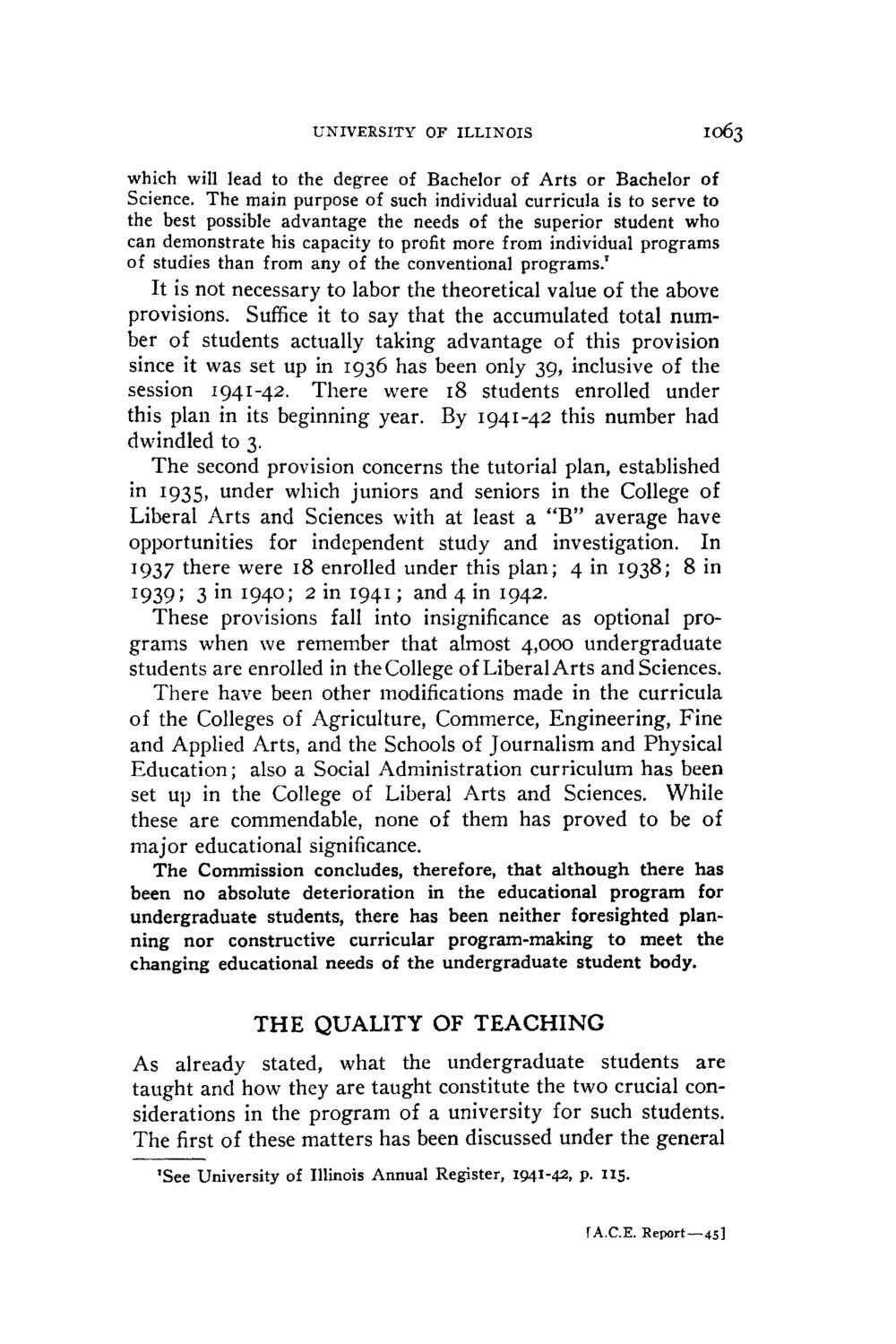| |
| |
Caption: Board of Trustees Minutes - 1944
This is a reduced-resolution page image for fast online browsing.

EXTRACTED TEXT FROM PAGE:
UNIVERSITY OF ILLINOIS IO63 which will lead to the degree of Bachelor of Arts or Bachelor of Science. The main purpose of such individual curricula is to serve to the best possible advantage the needs of the superior student who can demonstrate his capacity to profit more from individual programs of studies than from any of the conventional programs.7 It is not necessary to labor the theoretical value of the above provisions. Suffice it to say that the accumulated total number of students actually taking advantage of this provision since it was set up in 1936 has been only 39, inclusive of the session 1941-42. There were 18 students enrolled under this plan in its beginning year. By 1941-42 this number had dwindled to 3. The second provision concerns the tutorial plan, established in 1935, under which juniors and seniors in the College of Liberal Arts and Sciences with at least a " B " average have opportunities for independent study and investigation. In 1937 there were 18 enrolled under this plan; 4 in 1938; 8 in : 939J 3 m I 94°! 2 m I 9 4 I '> a n d 4 m I 94 2 These provisions fall into insignificance as optional programs when we remember that almost 4,000 undergraduate students are enrolled in the College of Liberal Arts and Sciences. There have been other modifications made in the curricula of the Colleges of Agriculture, Commerce, Engineering, Fine and Applied Arts, and the Schools of Journalism and Physical Education; also a Social Administration curriculum has been set up in the College of Liberal Arts and Sciences. While these are commendable, none of them has proved to be of major educational significance. The Commission concludes, therefore, that although there has been no absolute deterioration in the educational program for undergraduate students, there has been neither foresighted planning nor constructive curricular program-making to meet the changing educational needs of the undergraduate student body. T H E Q U A L I T Y OF T E A C H I N G As already stated, what the undergraduate students are taught and how they are taught constitute the two crucial considerations in the program of a university for such students. The first of these matters has been discussed under the general 'See University of Illinois Annual Register, 1941-42, p. 115. TA.C.E. Report —45]
| |